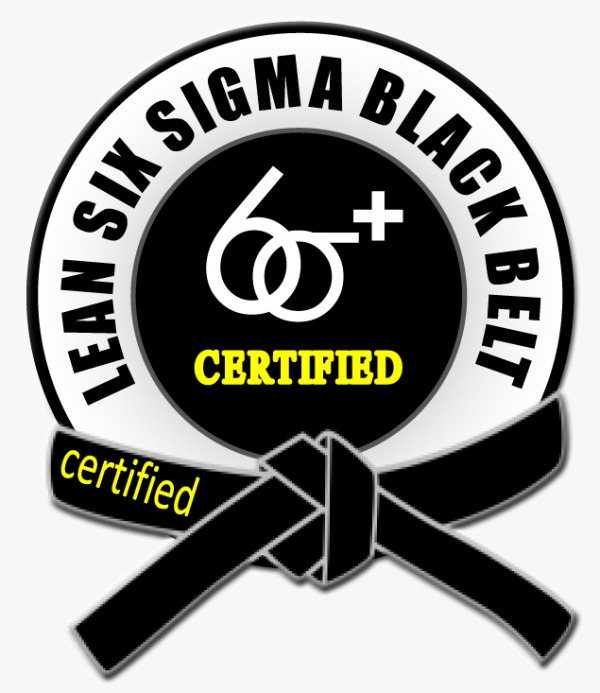Six Sigma is a methodology that aims to improve the quality of processes and eliminate defects in various industries. It utilizes a structured approach and a set of tools and techniques to minimize variations and maximize efficiency. At the core of Six Sigma are professionals known as Six Sigma Belts, who are trained to lead and implement the methodology effectively.
The Hierarchy of Six Sigma Belts plays a crucial role in assigning roles and responsibilities within organizations that adopt the Six Sigma methodology. This hierarchical structure helps organizations effectively utilize the skills and expertise of individuals at different levels to achieve their quality improvement goals.
At the top of the hierarchy is the Champion, who is typically a senior executive responsible for promoting and supporting Six Sigma initiatives across the organization. The Champion plays a significant role in setting goals, allocating resources, and ensuring a favorable environment for the successful implementation of Six Sigma projects.
Below the Champion, we have the Master Black Belt (MBB). Master Black Belts are highly trained and experienced professionals who serve as mentors and trainers for other Six Sigma Belts. They provide guidance and technical expertise to project teams and help them overcome challenges during the implementation of Six Sigma projects.
Next in the hierarchy are the Black Belts. Black Belts are full-time Six Sigma project leaders and have a deep understanding of the methodology. They are responsible for identifying improvement opportunities, leading projects, and driving positive change within their respective areas of expertise. Black Belts are skilled in data analysis, statistical tools, and project management.
The next level down is the Green Belt. Green Belts are part-time project team members who assist Black Belts in the execution of Six Sigma projects. They have a basic understanding of Six Sigma principles and techniques and contribute to data collection, analysis, and process improvement activities.
At the bottom of the hierarchy, we have the Yellow Belt. Yellow Belts have a foundational understanding of Six Sigma concepts and terminologies. They usually contribute to process improvement initiatives by providing support and participating in smaller-scale projects.
Each level of the Six Sigma Belt hierarchy requires specific training and certification, with the complexity and depth of knowledge increasing as you move up the ladder. The higher-level belts also have more responsibilities and are expected to lead larger and more complex improvement projects.
To illustrate the hierarchy of Six Sigma Belts, the following image provides a visual representation:

This image clearly depicts the different levels of Six Sigma Belts, with the Champion at the top, followed by the MBB, Black Belts, Green Belts, and Yellow Belts. Each belt level is color-coded, making it easy to distinguish between them.
Understanding the hierarchy of Six Sigma Belts is crucial for individuals and organizations looking to implement Six Sigma successfully. It helps in assigning roles, responsibilities, and expectations to individuals, ensuring that the right people are involved in the right projects and that accountability is clear.
In conclusion, the hierarchy of Six Sigma Belts is a fundamental aspect of the Six Sigma methodology. It provides a clear structure for organizations to leverage the skills and expertise of individuals trained in Six Sigma to achieve quality improvement goals. By understanding this hierarchy, organizations can optimize their Six Sigma initiatives and drive substantial improvements in their processes and overall performance.
Reference:
– [The Hierarchy of Six Sigma Belts: What Does It Mean? | Hygger.io](https://www.karatecollection.com/wp-content/uploads/2023/11/six-sigma-belt-levels-1280×927-1.png)
– [EasyLearning Tre – A professional Training Approach](https://www.karatecollection.com/wp-content/uploads/2022/03/lean-six-sigma-black-belt-3.jpeg)
If you are searching about Lean Six Sigma Black Belt Online Training | eLearning Marketplace you’ve came to the right web. We have 9 Pictures about Lean Six Sigma Black Belt Online Training | eLearning Marketplace like Lean six sigma black belt, Lean Six Sigma Step Up to Black Belt Training – Six Sigma Training and Jobs and also Lean Six Sigma Black Belt – 1WorldTraining. Here you go:
Lean Six Sigma Black Belt Online Training | ELearning Marketplace
www.elearningmarketplace.co.uk
sigma
EasyLearning Tre – A Professional Training Approach
www.easylearningtre.com
Lean Six Sigma Black Belt
plinthlearning.com
sigma belt six lean green certification training cssc days puzzle earning become pieces central level iassc exams rims rourkela certificate
Lean Six Sigma Black Belt – 1WorldTraining
www.1worldtraining.com
lean qualities candidate ten enroll
Black Belt Lean 6 Sigma Training By Result Consultancy
www.resultland.com
belt lean training sigma six quality
Six Sigma Belts – Which Lean Six Sigma Belt Should I Take?
www.6sigmacertificationonline.com
sigma roles chools responsibilities snapshot
Lean Six Sigma Step Up To Black Belt Training – Six Sigma Training And Jobs
sixsigma.com.my
belt sigma six lean step training statistical analysis tools lss
The Hierarchy Of Six Sigma Belts: What Does It Mean? | Hygger.io
hygger.io
hierarchy mean hygger
How To Become A Lean Six Sigma Black Belt
designer-memories.blogspot.com
lean belts training lss salary pdtraining timetoast paso
The hierarchy of six sigma belts: what does it mean?. Black belt lean 6 sigma training by result consultancy. Six sigma belts














